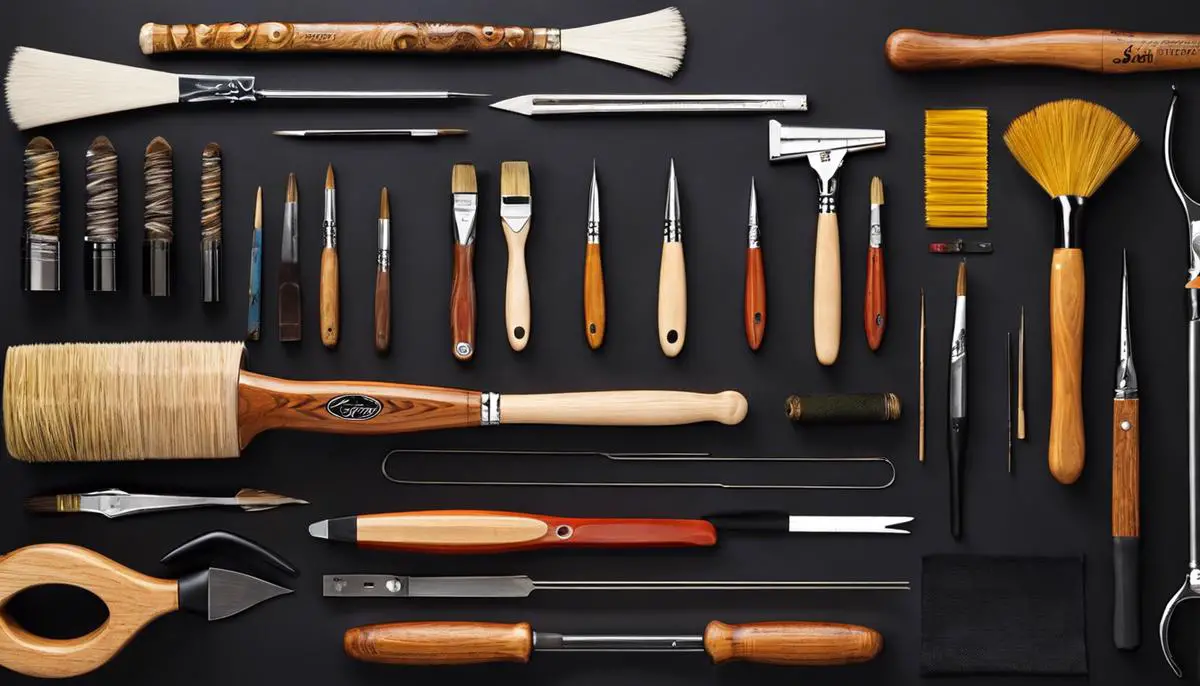DIY Projects: A Tool for Cutting Costs
Embracing the DIY (Do-it-Yourself) ethos isn’t just about finding a creative outlet, but it can also be a practical solution to saving money on various projects. From home improvements to crafting, gardening, or even repairing appliances, identifying tasks suited for DIY ventures is the first stride towards becoming a hands-on, cost-efficient individual. However, plunging into DIY isn’t just about having the right idea. It’s equally important to acquire a range of basic DIY skills, understanding the necessary tools and techniques, and prioritizing safety protocols. Furthermore, in order to ensure genuine savings, mastering cost analysis, and budget management is crucial. This includes developing expertise in performing cost-benefit analysis and learning to estimate the costs of materials, tools, and your time efficiently.
Identifying Projects Suited for DIY
Get Thrifty! Discover Amazing DIY Projects That Can Save You Big Bucks!
Making, creating, fixing – is there a better way to spend a weekend? If you’re a DIY enthusiast, chances are high that you can’t resist the lure of the craft store or the thrill of a fully stocked toolbox. More than a hobby, this is a way of life, a creative outlet, and for the thrifty among us, a path to significant savings. Understandably, not all DIY projects are created equal when it comes to cost-effectiveness. So, we will delve into which DIY initiatives truly pay off in the long run.
- Create Your Own Cleaning Supplies
- Upcycle Furniture
- Grow Your Own Produce
- Install Energy-Efficient Features
- DIY Home Repair
- Tailor Your Own Clothes
Sure, convenience is king, but purchasing store-bought cleaning supplies can add up fast. DIY cleaning supplies, on the other hand, are cost-effective, easy to make, and often utilize natural, household items. Classics like baking soda, vinegar, and essential oils can create powerful, eco-friendly cleaning agents without breaking the bank.
Why buy new when you can give the old a new lease on life? Embrace upcycling by giving tired, old furniture a makeover. With a lick of paint, sanding, or reupholstering, you can transform ageing pieces into something truly eye-catching. Bonus point – it’s sustainable!
There’s nothing quite like eating something you’ve grown yourself. Growing your own fruit, vegetables, and herbs is rewarding, healthy, and very cost-effective. You’ll save on grocery bills and reduce your environmental impact. You don’t need a large garden, just get a few pots onto your balcony or windowsill, and you’re set!
Reduce your energy costs and your carbon footprint at the same time. Fortunately, there are many energy-efficient upgrades a DIYer can handle. Consider installing energy-saving light bulbs, weather-stripping doors and windows for insulation, and a programmable thermostat for more efficient heating and cooling.
Hiring a professional is sometimes necessary, but for other small repairs around the house, DIY is a great money-saving approach. Projects like fixing leaky faucets, patching small holes in the wall, or repainting rooms can be easily taken on with a little know-how and determination.
Tailoring can make a huge difference to your wardrobe and your wallet! Upgrade your clothes with simple stitches or patches. Learn how to hem a pair of pants, sew on a button, or even make a tote bag. It can be a fun, fashionable, and frugal hobby.
DIY is not just about making the most out of your resources; it’s about fostering creativity, learning new skills, and empowering yourself to tackle any project with both hands. So, pick up that tool, grab that brush, plant that seed, and start saving! It’s time to embrace the DIY way. Remember, “The only impossible journey is the one you never begin.” – Tony Robbins.

Learning Basic DIY Skills
Fundamental DIY Skills for the Enthusiastic Hobbyist
What’s better than mastering a set of new skills? Answer: Utilizing those newfound proficiencies to create something that reflects your personality and taste. DIY skills are not only practical, they put you in the driver’s seat, allowing immense creativity and adaptability. Let’s dive into the fundamental DIY skills that can really mark the difference.
Mastering the Power Tools:
The DIY world revolves around power tools. Knowing their intricacies can take your projects to the next level. Drill machines, circular saws, jigsaws, and routers are few of the essential power-tools that are worth getting your hands on. Practice safety and proper handling techniques to make the most of them.
Learning Basic Electrics:
Understanding the basics of home electrics is profoundly empowering and can also save you bucks on minor repairs. Familiarize yourself with the home’s electrical panel and the way circuits work. Master simple tasks like wiring a plug, replacing a light switch, or installing outlets.
Painting and Decorating:
A fresh coat of paint can drastically change the feel of a room. Basic painting techniques such as cutting in, rolling, sanding and priming are essential for a polished look. Experiment with different finishes like matte, glossy, or semi-glossy. Adept use of stencils or creating lovely wall textures could be the cherry on the top.
Woodworking Skills:
Woodwork can be a rewarding DIY venture. Grasp the basic skills of cutting, drilling, and fastening pieces of wood. Once comfortable with the basics, intricate projects like crafting a bookshelf, coffee table, or even a gazebo are within reach.
Basic Plumbing:
Tackle minor plumbing issues that don’t need a professional’s touch. Understanding how to unblock a drain, change a shower head, or fix a leaking tap not only saves you potentially expensive plumber calls but empowers you to be self-sufficient.
Masonry Basics:
Decking your home with a brick fireplace, a stone pathway, or a patterned garden wall can add a rustic charm. This requires engaging with masonry basics such as mixing and applying mortar, laying bricks or stones, and making masonry repairs.
Crafting with Textiles:
Harnessing basic sewing skills opens a world of DIY possibilities. Pillowcases, curtains, tote bags, or even simple upholsteries, can be crafted with personal touches.
The journey to becoming a DIY enthusiast is paved with a mix of passion, practice, and persistence. The ongoing learning experience is gratifying. So, roll up those sleeves and plunge into the world of DIY – make something new, repair something old, or simply enhance what you already have – the world is your oyster!

Cost Analysis and Budget Management
Harnessing Financial Acumen in Your DIY Journey
Delving into the arena of Do-It-Yourself (DIY) projects is more than just a test of your creativity and dexterity. It’s also an exercise of your financial prudence. Managing costs and resources effectively is essential for your DIY endeavors to be as rewarding as they are enlightening. Here’s how one can analyze and manage costs with DIY projects, beyond the scope of everyday essentials like home repairs and textile crafting.
- Careful Planning: Every DIY journey starts with an idea. However, before you immerse yourself in the process, it’s advisable to have a detailed plan outlining the resources needed – including materials, tools, and time. A well-laid plan can mitigate the risk of unexpected expenditure and helps keep the project within budget.
- Market Research: Be it power tools, raw materials, or other essentials, the pricing in the market is not always consistent. Therefore, thorough market research can often lead to better deals and more cost-effective options. Always compare prices from different vendors before making the purchase.
- Bulk Buying: When certain materials are required in large quantities, purchasing in bulk can be more economical. However, it’s essential to balance the scales between bulk buying benefits and the risk of surplus materials that can add to the clutter.
- Reuse and Recycle: Never overlook the potential of unused items lying around your house. Old clothes, unwanted furniture, leftover paint – all of it can be ingeniously reused in various projects, thus reducing the requirement for fresh purchases.
- Skill Enhancement: There’s a wide array of skills beyond painting, decorating, and woodwork which one can learn to further cut down costs. For instance, mastering advanced electrical tasks or intricate masonry work could potentially save substantial expenditure on professional services.
- Financial Analysis: Keeping tabs on your DIY expenditures is crucial. Maintain a record of all project-related expenses and regularly assess the value you’re deriving from each project. This analysis will guide your future spending and ensure you’re investing wisely in your DIY endeavors.
- Quality vs. Cost: While being budget-conscious is crucial, compromising on the quality of materials and tools can prove counterproductive. Higher quality tools often offer better longevity and are more value-for-money in the long run.
- DIY or Buy: Lastly, for every project, it’s essential to assess whether the DIY approach is indeed more cost-effective than buying the product outright. This balancing act is crucial to prevent DIY projects from becoming financially draining exploits.
Indeed, DIY projects are not just about creating and innovating; they’re also about judicious management of resources. So, the next time you embark on a DIY project, remember – each penny saved is a penny earned!

Whilst the path to becoming a proficient DIYer requires some learning and experience, it certainly provides a highly rewarding and fulfilling journey. Not only does it enrich you with varied skills like painting, sewing, or woodworking, but it also empowers you to take control of your projects and potentially save a significant amount of money. Understand that cost analysis and efficient budget management are integral to reaping the benefits of your DIY projects. So, set forth on this journey with a keen eye for opportunities, a willing hand to do the work and an intellect to perform cost-benefit analysis. Let your DIY journey be an exciting confluence of creativity, learning, cost efficiency and deeply gratifying experiences.
